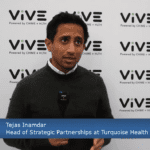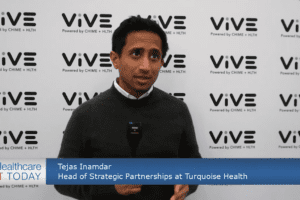The importance of data in healthcare has been beaten into our heads again and again and again. Healthcare runs on data, all good decisions are backed by data, etc. I think we’re all on the same page about making sure our organizations have all of the healthcare and patient data we can get our hands on. But in repeating the simple message that data is important, we tend to leave out that even more important is the ability to properly manage it to make it accessible, especially with the sheer amount of data that healthcare organizations need to run properly. One tool that can help in this endeavor is the Internet of Medical Things (IoMT).
To learn more about IoMT’s role in data management, collection, and sharing, we have reached out to our ever so brilliant Healthcare IT Today Community for their IoMT insights and practical knowledge along with what’s happening with this promising technology. The following is what they had to share with us.
Dustin Vaughan, Vice President, R&D, Robotics at Asensus Surgical
Historically, aspects of patient care have been restricted by the availability of quality real-time data. This includes patient monitoring information and other care delivery metrics, such as care delivered in surgery. With the continued introduction of low-cost reliable IoMT technologies, there will be a broad global adoption across all healthcare segments. Our efforts in the surgery space include the integration of IoMT technologies to deliver Performance-Guided Surgery™.
John Guiliana, Medical Director of Podiatry at ModMed
IoMT technologies reach their full potential for chronic care management when individual patient monitoring devices become traceable within the medical practice’s EHR system. Naturally, the technologies must be capable of monitoring, measuring, and managing patient conditions while reporting and alerting healthcare providers of the data as well as the patient’s compliance. But IoMT technologies need to go beyond that initiative. For example, we already leverage technology such as smart insoles for the shoes of diabetic patients, but by tracking those devices through unique identifiers within EHRs, we can respond more effectively to recalls or device failures and ensure each device is capturing data accurately.
Steve Kent, Chief Product Officer at Know Labs
The pace of global technological advancement is putting immense pressure on the healthcare system to modernize. While this poses great benefit to support how people live longer, healthier lives, concern remains that the U.S. healthcare system isn’t adaptable enough to keep up with market or patient expectations. The opportunity lies where the innovative capabilities of the technology industry merge with the robust and established processes of the incumbent healthcare industry to develop something new – a better way to support patients on their journey to optimal health. And this journey is fueled by high-quality, continuous, comprehensive data across patient history, physiology, behavior, nutrition, exercise, sleep, cognition, relationships, education, medication adherence, acute/interventional findings, and so on.
All of this data about patient health means little when there is no standardized and seamless way to collect, organize, analyze, interpret, and communicate findings in a scalable and meaningful way. This is where the IoMT plays a critical role. IoMT is becoming more important than ever because there are more intelligent medical devices, producing more continuous data, on more diverse patient populations than ever.
The ability to organize all of these devices and data will allow physicians and technology developers to use AI and ML at scale to build predictive and preventive health management protocols and interventions. The result is an interconnected system driven by IoMT that empowers patients with meaningful, predictive medical data to inform the hundreds of decisions they make each day that can potentially impact their health. The learnings IoMT enables could answer what are the appropriate incentives to encourage patients, providers, and payors to optimize their positions in fulfilling a long-term healthcare plan.
Judy Jiao, Chief Information Officer at National Government Services
loMT devices are like 24/7 assistants for clinicians. The convenience, accuracy, and timely feedback these devices provide can encourage patients and caregivers to play a more active role in health care. IoMT devices can deliver insights into a patient’s health on a continuous basis, effectively enabling clinicians to make real-time, informed decisions. However, advanced data analysis presents a tremendous opportunity to maximize the value and utility of the data these devices generate.
Mature data analysis and data management infrastructures can help to realize more meaningful suggestions for managing a person’s health. Moreover, the benefits of preventive care and timely treatment supported by utilizing these devices will outweigh the upfront cost of these technologies in the long run.
So much to consider here! Thank you to everyone that took the time to leave a quote for us and thank you to everyone who took the time to read this article! We would love to hear your thoughts as well. Leave a comment down below or share this article on social media and check out what people are saying over there!













